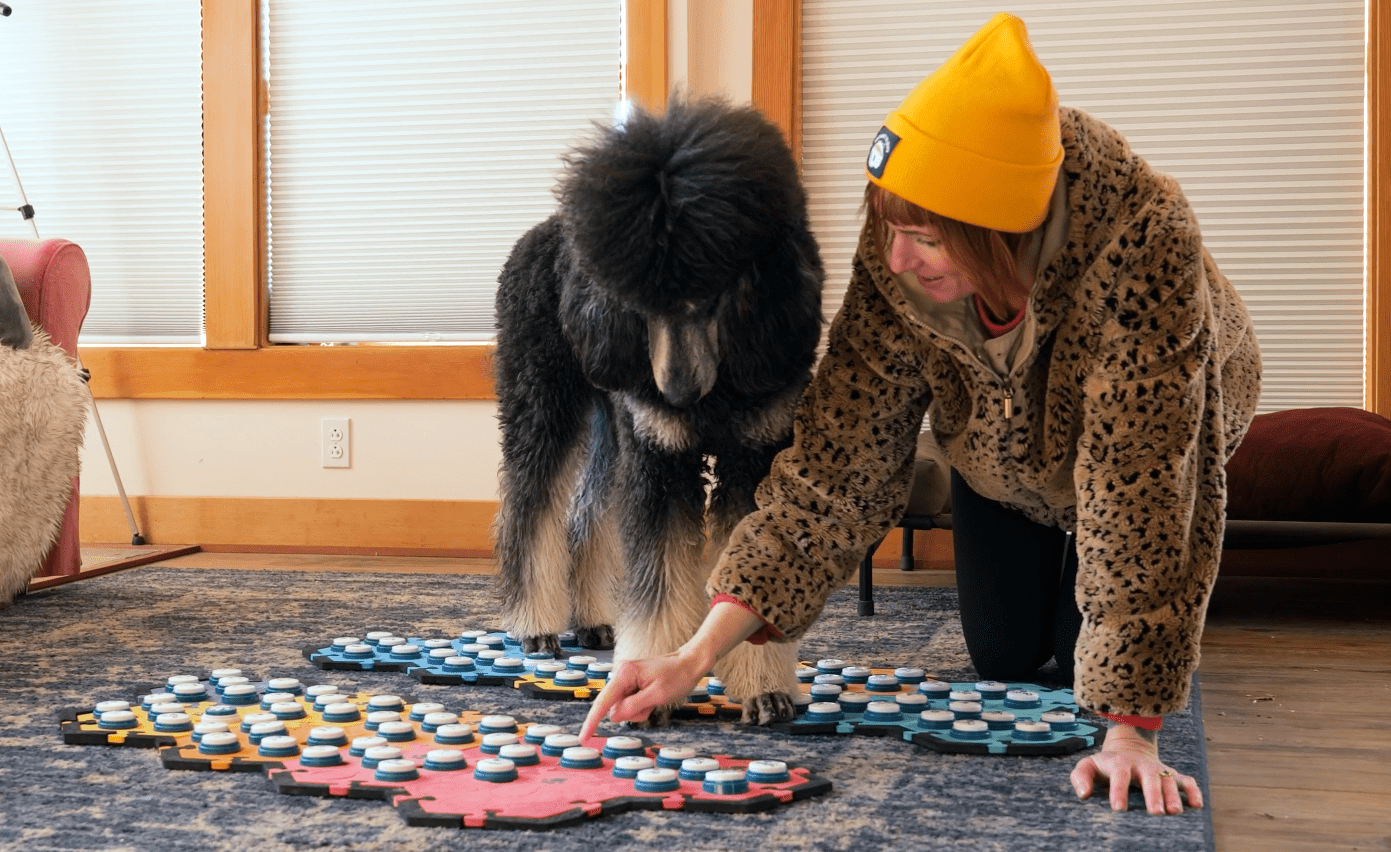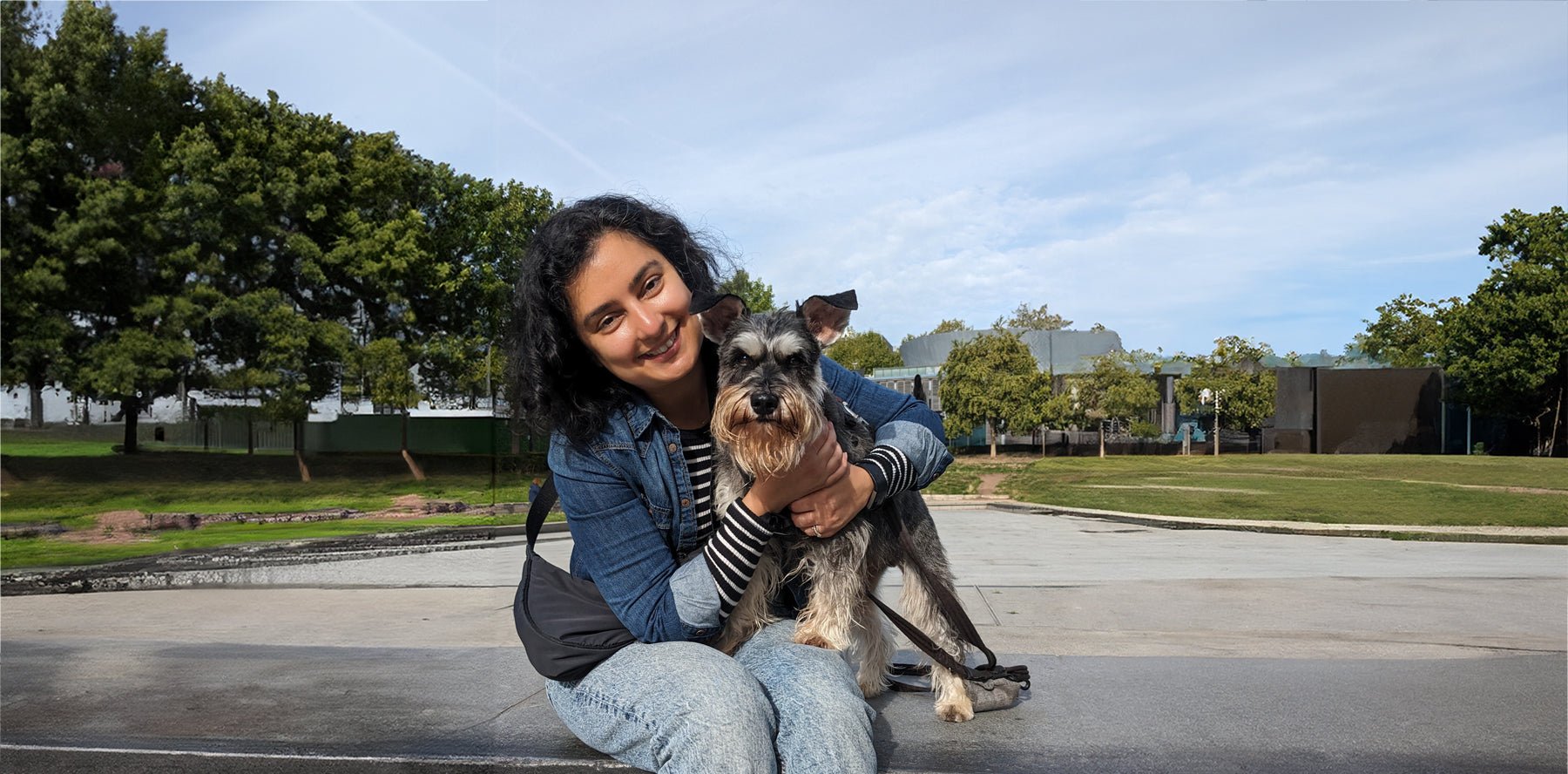by Courtney Sexton
Until recently, common dog training methods relied on a dated understanding of animal behavior. A punishment-based approach grounded in ideas of “dominance” was the norm in many households (and even TV shows).
Remember the potty training method that involved rubbing a dog’s nose in an accident and yelling at them? This doesn’t “correct” the unwanted behavior or keep him from soiling in the house. Instead, it creates negative associations for the dog when he needs to relieve himself, and this fear of punishment can cause him to hold things in, likely resulting in more accidents.
We are (very thankfully!) now in an era of greater understanding and compassion when it comes to teaching dogs the ropes of living in a human-dominated world—one that focuses on moments when a dog (or cat!) does the right thing.
What is reward-based training?
Today, any good behaviorist, trainer, or canine healthcare professional encourages helping dogs learn via methods that are “reward-based,” rather than using punishment to reinforce commands.
But the terminology around dog training can get confusing. Reward-based training is sometimes inappropriately referred to as “positive reinforcement” training. In human behavioral and animal psychology, reinforcement is just one part of what is known as operant conditioning. While there are many aspects to influencing and predicting behavior, psychologists simplify operant conditioning theory into four quadrants:
- Positive Reinforcement
- Positive Punishment
- Negative Reinforcement
- Negative Punishment
In this framework, positive simply refers to adding a stimulus with the goal of inducing or stopping a behavior. The term negative refers not necessarily to something bad, but rather the opposite of addition, that is, taking away a stimulus to get the desired result. Both punishments and rewards can be positive (added) or negative (removed) in training.
Negative reinforcement can be especially hard to grasp, but is not necessarily a bad thing. Think of an example with a child. You might remove their chores for the weekend because their room was clean all week. This reinforces cleanliness by taking away something they don’t like.
So while you may often hear about “positive reinforcement” as the best kind of training, what that really means is training that relies on “reward-based” feedback, is the kind that’s most compassionate and effective. We can reinforce behaviors by giving and withholding rewards, but essentially, what we want to do is skip the punishment quadrants, positive and negative, and avoid using aversive methods.
Instead, we want to be sure to give treats, belly rubs, playtime, and/or attention (aka rewards), when our pups do the right thing. If our pup is misbehaving, we can withhold the reward, so as not to encourage that unwanted behavior from them. That said, you would never want to withhold your dog’s basic necessities or comforts, like food, water, and shelter, or anything that keeps them safe.
How to select appropriate rewards
Not all rewards are created equal in a dog’s mind. Every dog is different when it comes to what motivates them. And, for many dogs, how enticing a given reward is may be situational. Other factors, including age and breed-related differences also play a role in reward-responsiveness.
For example, my dog’s favorite thing to do is chase squirrels. If I want to snap his attention away from a squirrel, I’m going to need an equally exciting reward to get him to come back to me. For him, in this case, treats mean zilch. Instead, offering something else he can more safely chase, like his chuck-it ball, might be a more effective option in this circumstance.
In other scenarios, like when practicing basic “heels,” and “sits” at home without distractions, regular pieces of kibble can be rewarded enough to keep him engaged.
Remember that training is a two-way street. When practicing reward-based training methods, we humans have work to do, too. We need to learn our own dog's hierarchy of rewards, and use them wisely depending on the difficulty or level of attention required by the task you are asking your dog to accomplish. (And keep in mind that the most effective reward might not always be food!)
Reward-based methods can encourage learners during button teaching
Button teaching is ultimately meant to result in more intrinsic reward(s) for your dog— that is, the ability to better communicate with you! But, that doesn’t mean that using external rewards along the way is “cheating.”
On the contrary, one of the best things you can do during button teaching is to encourage and praise your learner throughout the process. Especially during the target training phase, if your dog looks toward the board, sniffs at it, or just generally shows interest, let them know they’re doing great.
When you know a dog wants something, the ultimate reward they can get is to give them the specific thing that they indicate pressing a button, so staying consistent with your responses to the presses with an appropriate action is key. For example, as your learner is expanding their words, the only button that should be rewarded with a treat is the one that means “treat.”
So what does this all mean for us? Pay attention to the words that already excite your dog (i.e., the ones that are the most rewarding) These are the ones most likely to be asked for, and will be the most rewarding!




Leave a comment
This site is protected by hCaptcha and the hCaptcha Privacy Policy and Terms of Service apply.